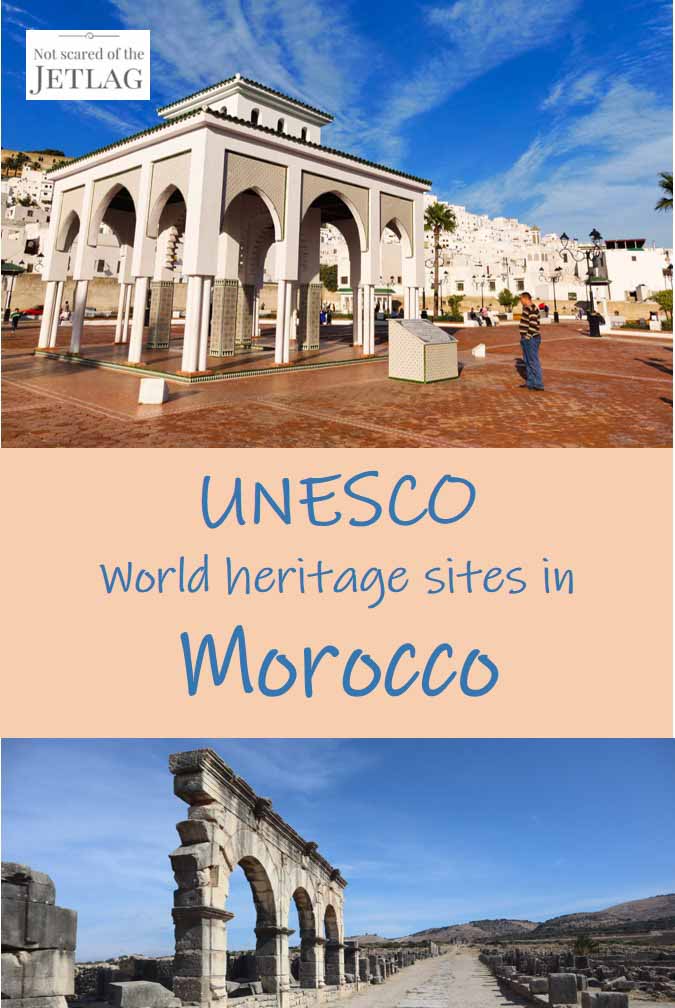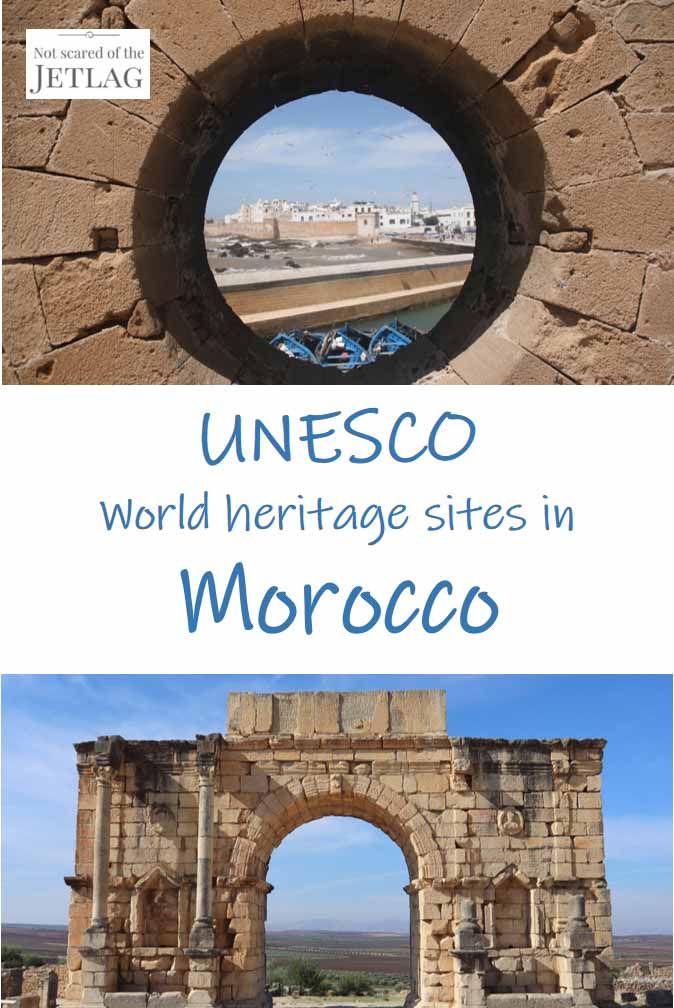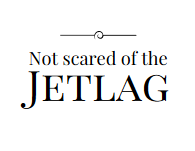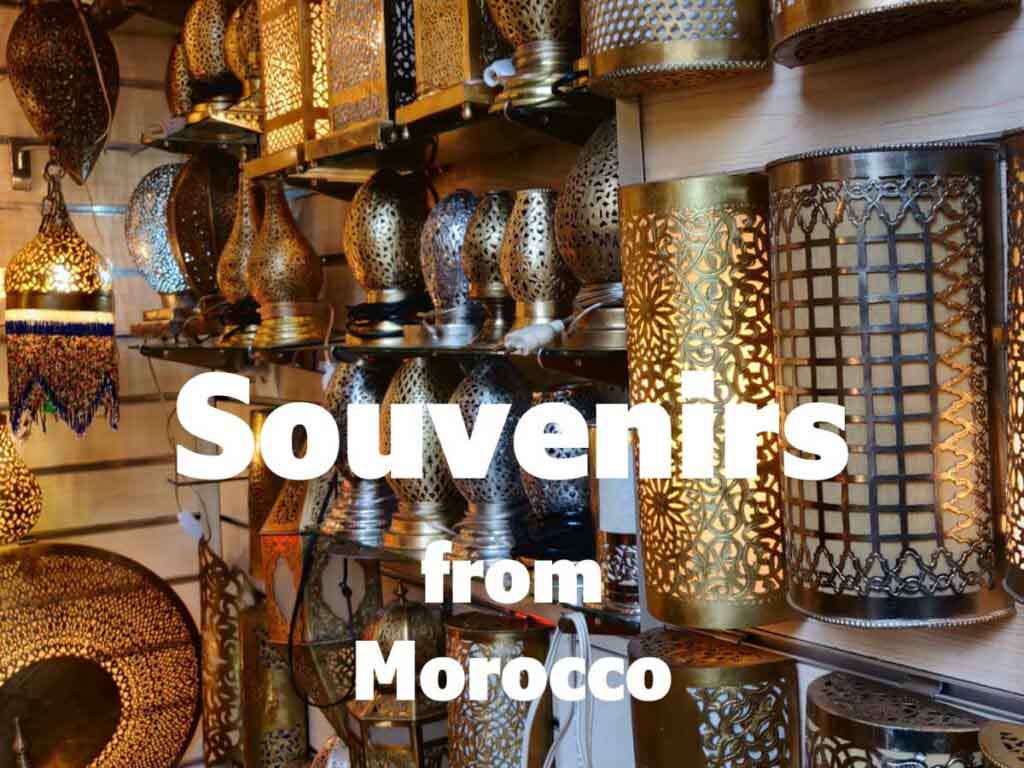The UNESCO has been listing places of natural or cultural significance since the 70s and Morocco has a total of 9 UNESCO world heritage sites currently listed. Considering that even Egypt only has 7 sites on the list, this I quite a big number for a small country such as Morocco. At the same time, this means distances are relatively small and you can actually visit all of the UNESCO sites in Morocco in a 7-10 days trip.
I have visited all 9 by now and have to say, it was totally worth it!
To make your planning easy, I’ve put them in an order that makes sense as an itinerary, if you want to visit them all. Of course you can also visit them in the reverse order, starting in Marrakech and ending in Fes.
Medina of Fes
Out of the two big medinas in Morocco, the one in Fes might be my favourite. Mostly because there is no motorbike traffic in the narrow lanes. You can be sure you will get lost in the medina, everyone does, as there is no visible pattern to follow.
It goes up and down, turns to the right and to the left, and in the souk it is even more confusing as you can’t even see the sky for reference. But, it is so much fun to discover all the hidden places, the tanneries, mosques and medersas (old Quran schools).

It might be a good idea to hire a guide for half a day if you are travelling alone or just prefer to have a bit more structure to your visit.
- Madrasa Bou Inania
- Bab Bou jeloud
- Medersa Al Attarine
- Funduq al Najjarine
- The tanneries
Historic city of Meknes
Meknes might be small and most people visit only on a day trip from Fes, but to me this city is seriously underrated. It has a very relaxed feel, especially in comparison with Fes, and deserves more attention.
It used to be the centre of the Alaouite empire under Moulay Ismail in the 17th century. The UNESCO listing includes the medina as well as the old Imperial City. So, take a stroll through the medina, check out the old Medersa Bou Inania in the centre of it and admire the Bab Mansour from one of the roof top cafes surrounding the Place al Hedim.

From here you might want to take a horse carriage to visit the Imperial City, as it is a bit of a walk. Visit the old horse stables, the Bassin d’Agdal and the Mausoleum Moulay Ismail.
Architectural site of Volubilis
If you are a fan of Roman ruins and Mosaics this is the place to go! Volubilis is believed to have been the capital of the former empire of Mauretania, before the Romans took over around 50 AD. It grew to have between 10.000 and 20.000 inhabitants, so it was quite a significant size.
But, the locals fought against the Romans and managed to take the city back at the end of the 3rd century AD. They slowly started to take the Roman structures apart and Moulay Ismail took lots of marble for his new capital Meknes.

Finally, an earthquake destroyed the leftovers to the current state in the 18th century.
You can see the old bathhouses, oil mills and quite a few mosaics. The most impressive structure is the Triumph Arch at the end of one of the main roads.
Most people come here as a day trip from Fes.
Medina of Tetouan
Tetouan is located in the far north of Morocco, close to the Mediterranean Sea. Its medina is one of the smallest in Morocco, but one of the best preserved. It has white-washed walls and covers the side of a hill, making it very photogenic.
The whole medina is still surrounded by a big wall and you can only enter through on of the seven gates. Parts of it are covered by green wooden roofs, giving well needed shade in the summer.
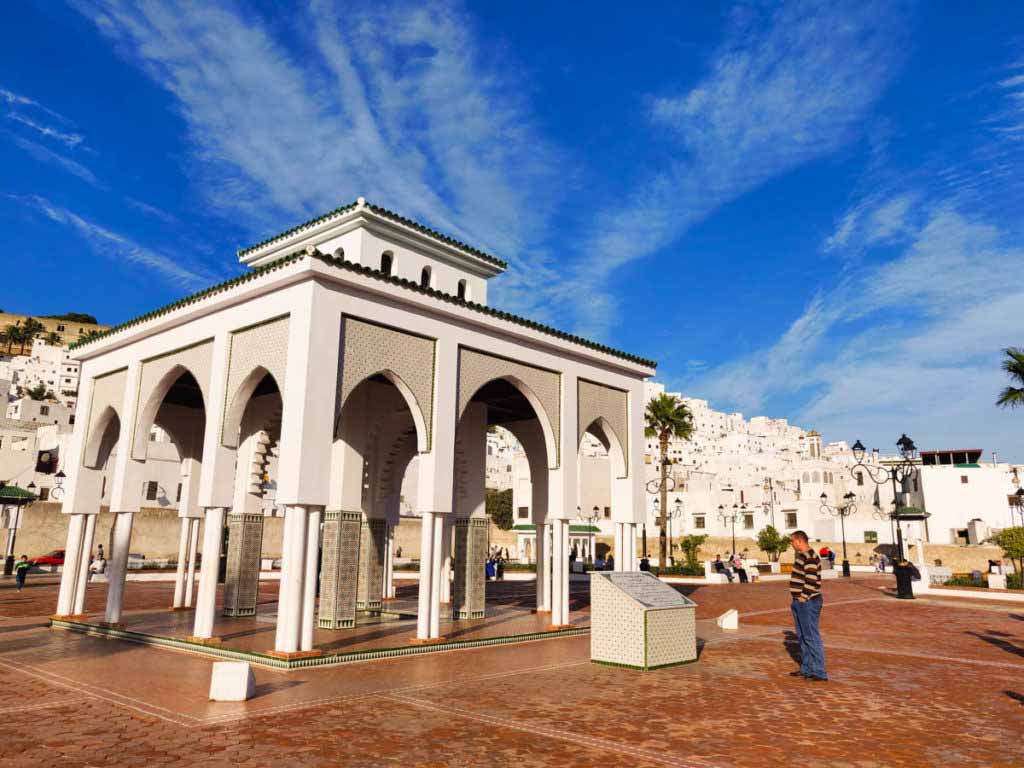
The medina borders the Spanish Quarter, also held in white, but much newer and with the typical Spanish balconies. It is this contrast that makes Tetouan one of my favourite cities in Morocco.
Rabat, Modern Capital and Historic city, a shared heritage
Rabat is a very interesting and diverse city and totally underrated. You can of course find a medina, a mellah (old Jewish qarter) and then the Ville Nouvelle, the new quarters founded by the French during the occupation of Morocco. It was the French who made Rabat the capital of Morocco, but it had been capital once before, in the 12th century AD.

The reigning sultan of this time started building the biggest mosque of the time, but sadly he died before its completion. The size is pretty impressive, even though you can only see the outline and lots of short columns of different heights as well as the unfinished minaret, the Hassan Tower.
On the opposite side of the square is the mausoleum of Mohammed V and Hassan II, one of the few mausoleums open to non-muslim visitors.

The medina is small and safe and the mellah is also worth a visit. My favourite part of Rabat is the Kasbah de Oudaya though. It’s an old fortified part of the city with blue and white walls overlooking the ocean as well as the river separating Rabat from Sale.
Portuguese city of Mazagan (El Jadida)
This is the last UNESCO world heritage site in Morocco I visited. The interesting part is, it is Portuguese heritage more than Moroccan really.
The Portuguese medina of El Jadida is tiny, only 200 x 300 m with strong fortifications that you can climb on. Look for the Bastion de l’Ange and Bastion de San Sebastian. From here you can see the old port and enjoy sunset views.
The most spectacular sight is the Cisterne Portugaise, an underground basin supported by 25 columns and lit only by a hole in the ceiling. It collects rainwater used as drinking water for the city back in the days. Currently (August 2022) the cistern is closed for restorations though.
Medina of Essaouira
The medina of Essaouira is very easy to navigate, as it is laid out almost chessboard style. It is also really safe, and you won’t get harassed as you might in Marrakech or Fez. So, it is the ideal place for souvenir shopping.
Most people come here as a day trip from Marrakech, as it is only a two hour drive away.

Head to the ramparts and to the Skala du Port for great ocean views. If you are a fan of Game of Thrones you will feel immediately transported into Westeros.
If you want to know more about Essaouira, head over to my post about things to do in Essaouira.
Medina of Marrakech
The medina of Marrakech is the other big medina in Morocco. With its red and orange walls, every alley looks just like the next, and most people need years to be able to navigate it without a map. So I promise you, you will get lost!
The fun part about this is, you will find a lot of hidden treasures. Small shops selling lamps or woodworks, little cafés perfect for a stop. And some people watching and maybe an interesting conversation with a local.
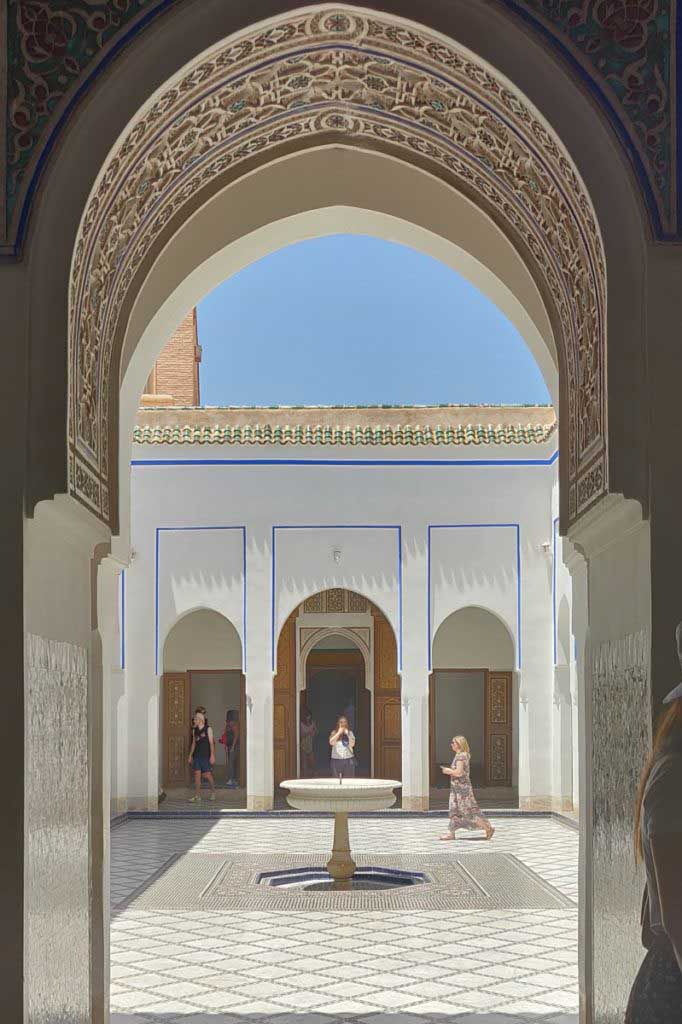
Of course, there are lots of sights to visit in the medina of Marrakech, here are my favourites:
- Bahia Palace
- Medersa Ben Youssef
- El Badi Palace
- Je Jardin Secret
- Saadian Tombs
Bonus: Story tellers of Jemaa el Fna
The story tellers of the Jemaa el Fna are not a site per se, but got a UNESCO title as intangible cultural heritage of humanity. So when you visit Marrakech, make sure to spend the evening on the main square. Listen to the stories, even though you might not understand a word of it. Some of them are so entertaining it doesn’t really matter.

Ksar of Ait Ben Haddou
Ait Ben Haddou dates back around 1000 years. It used to be a fairly rich town due to its location as the first stop for all travellers and traders coming through the Atlas from the north. So, there was quite a big need for fortifications and you can still see this on almost every building.
Once the big caravans stopped, the town lost its importance. But people quickly realized, life in this area was fairly easy and Ait Ben Haddou stayed inhabited until fairly recently. It was put on the UNECSO list in 1987 and while the increase in tourism brought money, it also led to people leaving. They moved into the “modern” part of town across the river.
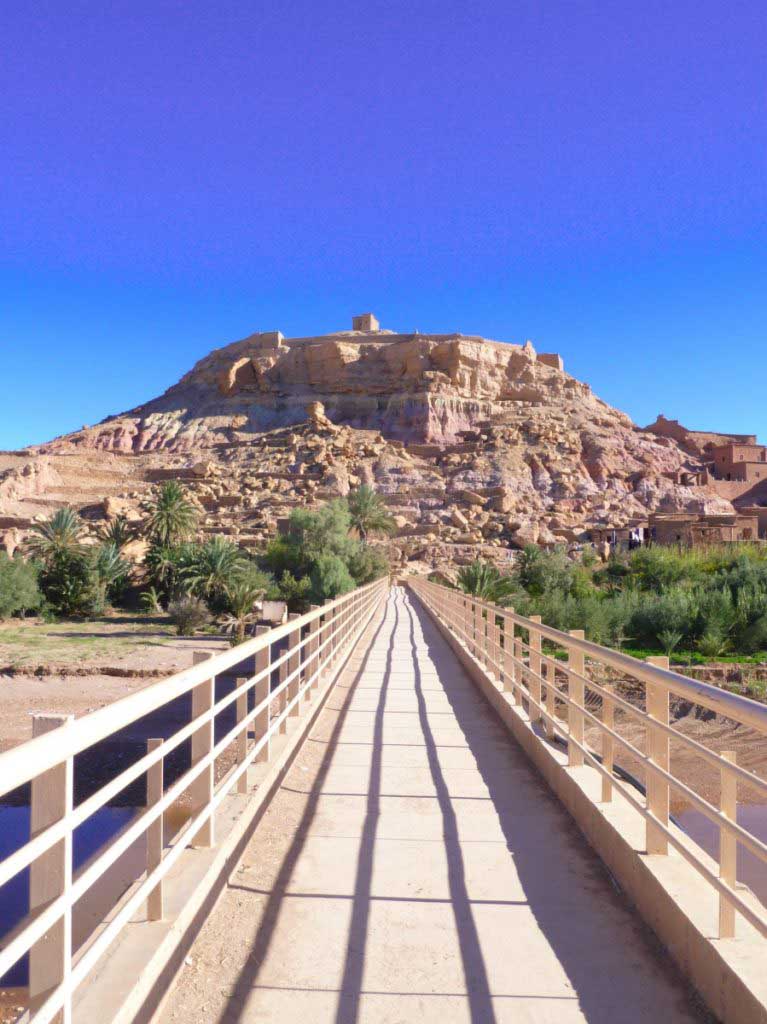
So today it is purely a museum town, but one still worth visiting. Wandering around the narrow alleyways on the way up the hill for the best views, you will feel like visiting a long-lost time.
Most people will have seen glimpses of Ait Ben Haddou on TV or in the movies, it has been used as filming location for e.g. Game of Thrones and Gladiator.
